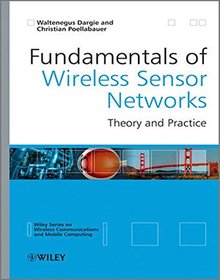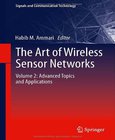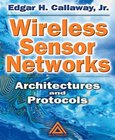Fundamentals of Wireless Sensor Networks
Theory and Practice

Book Details:
| Publisher: | Wiley-Blackwell |
| Series: | Wiley , Practice |
| Author: | Waltenegus Dargie |
| Edition: | 1 |
| ISBN-10: | 0470997656 |
| ISBN-13: | 9780470997659 |
| Pages: | 330 |
| Published: | Jul 23 2010 |
| Posted: | May 11 2017 |
| Language: | English |
| Book format: | |
| Book size: | 4 MB |
Book Description:
In this book, the authors describe the fundamental concepts and practical aspects of wireless sensor networks. The book provides a comprehensive view to this rapidly evolving field, including its many novel applications, ranging from protecting civil infrastructure to pervasive health monitoring. Using detailed examples and illustrations, this book provides an inside track on the current state of the technology. The book is divided into three parts. In Part I, several node architectures, applications and operating systems are discussed. In Part II, the basic architectural frameworks, including the key building blocks required for constructing largescale, energyefficient sensor networks are presented. In Part III, the challenges and approaches pertaining to local and global management strategies are presented this includes topics on power management, sensor node localization, time synchronization, and security. At the end of each chapter, the authors provide practical exercises to help students strengthen their grip on the subject. There are more than 200 exercises altogether. Key Features: Offers a comprehensive introduction to the theoretical and practical concepts pertaining to wireless sensor networks Explains the constraints and challenges of wireless sensor network design; and discusses the most promising solutions Provides an indepth treatment of the most critical technologies for sensor network communications, power management, security, and programming Reviews the latest research results in sensor network design, and demonstrates how the individual components fit together to build complex sensing systems for a variety of application scenarios Includes an accompanying website containing solutions to exercises (http://www.wiley.com/go/dargiefundamentals) This book serves as an introductory text to the field of wireless sensor networks at both graduate and advanced undergraduate level, but it will also appeal to researchers and practitioners wishing to learn about sensor network technologies and their application areas, including environmental monitoring, protection of civil infrastructure, health care, precision agriculture, traffic control, and homeland security.
Download Link:
Related Books:
The Art of Wireless Sensor Networks
Volume 1 Fundamentals
During the last one and a half decades, wireless sensor networks have witnessed significant growth and tremendous development in both academia and industry.The Art of Wireless Sensor Networks: Volume 1: Fundamentals focuses on the fundamentals concepts in the design, analysis, and implementation of wireless sensor networks. It covers the various layers of the lifecycle of this type of network from the physical layer up to the application layer. Its rationale is that the first volume covers contemporary design issues, tools, and protocols for radio-based two-dimensional terrestrial sensor networks.All the book chapters in this volume include up-to-date research work spanning various classic facets of the physical properties and functional behavior of ...
The Art of Wireless Sensor Networks
Volume 2 Advanced Topics and Applications
During the last one and a half decades, wireless sensor networks have witnessed significant growth and tremendous development in both academia and industry. A large number of researchers, including computer scientists and engineers, have been interested in solving challenging problems that span all the layers of the protocol stack of sensor networking systems. Several venues, such as journals, conferences, and workshops, have been launched to cover innovative research and practice in this promising and rapidly advancing field. Because of these trends, I thought it would be beneficial to provide our sensor networks community with a comprehensive reference on as much of the findings as possible on a variety of topics in wireless sensor networks. As thi...
Wireless Sensor Networks
Architectures and Protocols
Because they provide practical machine-to-machine communication at a very low cost, the popularity of wireless sensor networks is expected to skyrocket in the next few years, duplicating the recent explosion of wireless LANs. Wireless Sensor Networks: Architectures and Protocols describes how to build these networks, from the layers of the communication protocol through the design of network nodes. This overview summarizes the multiple applications of wireless sensor networks, then discusses network device design and the requirements that foster the successful performance of these applications.The book discusses factors affecting network design, including the partitioning of node functions into integrated circuits, low power system design, power sour...
2007 - 2021 © eBooks-IT.org



